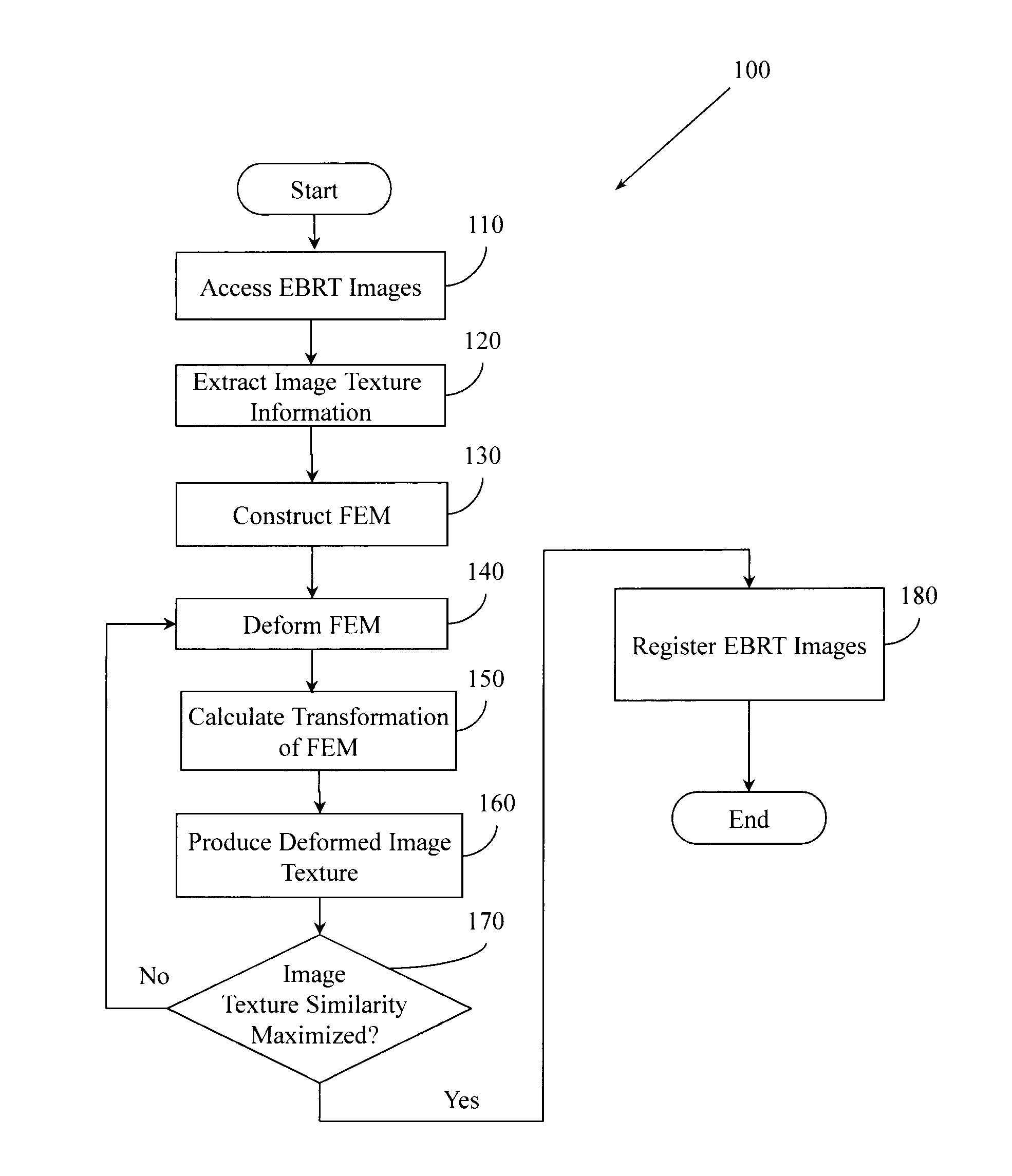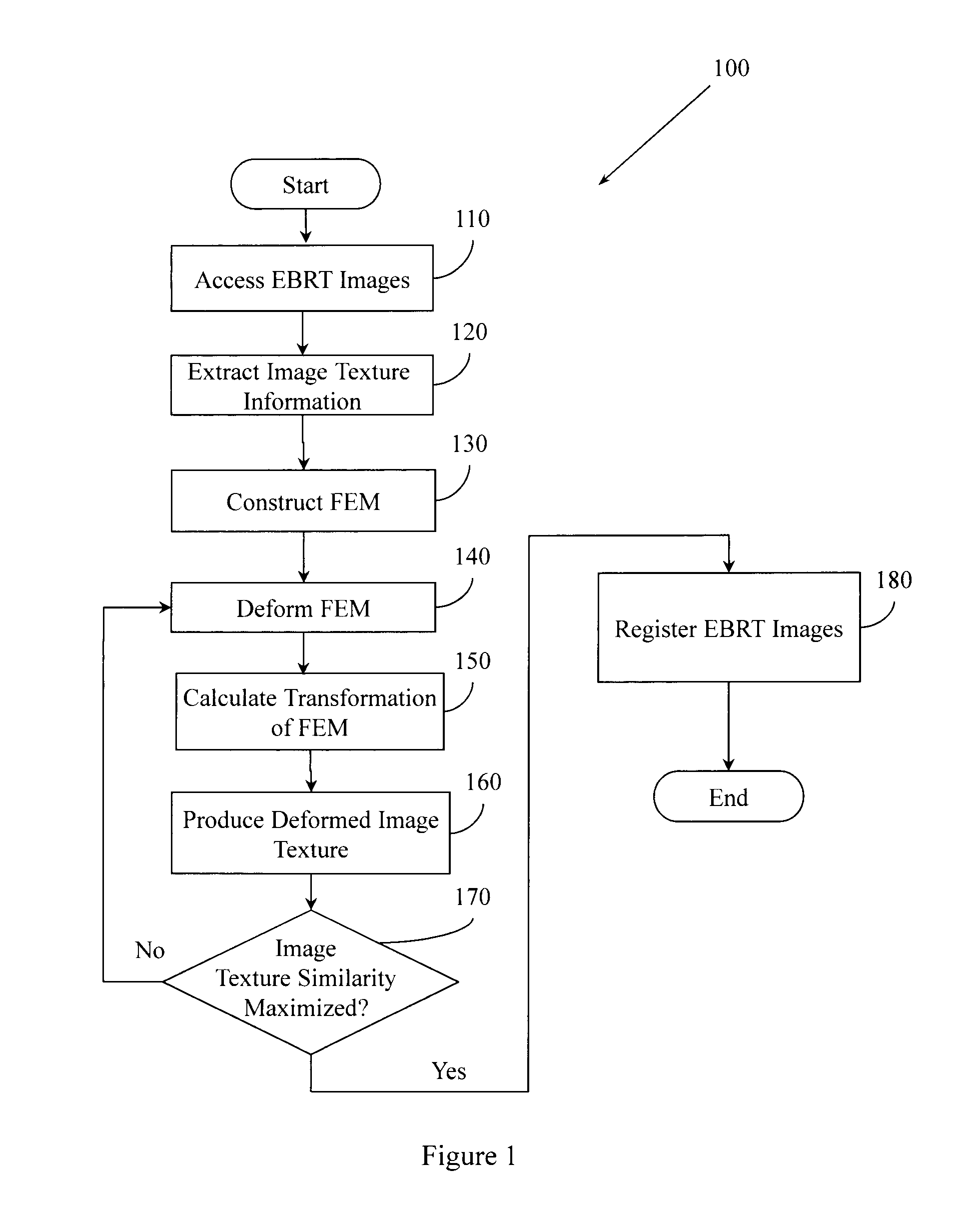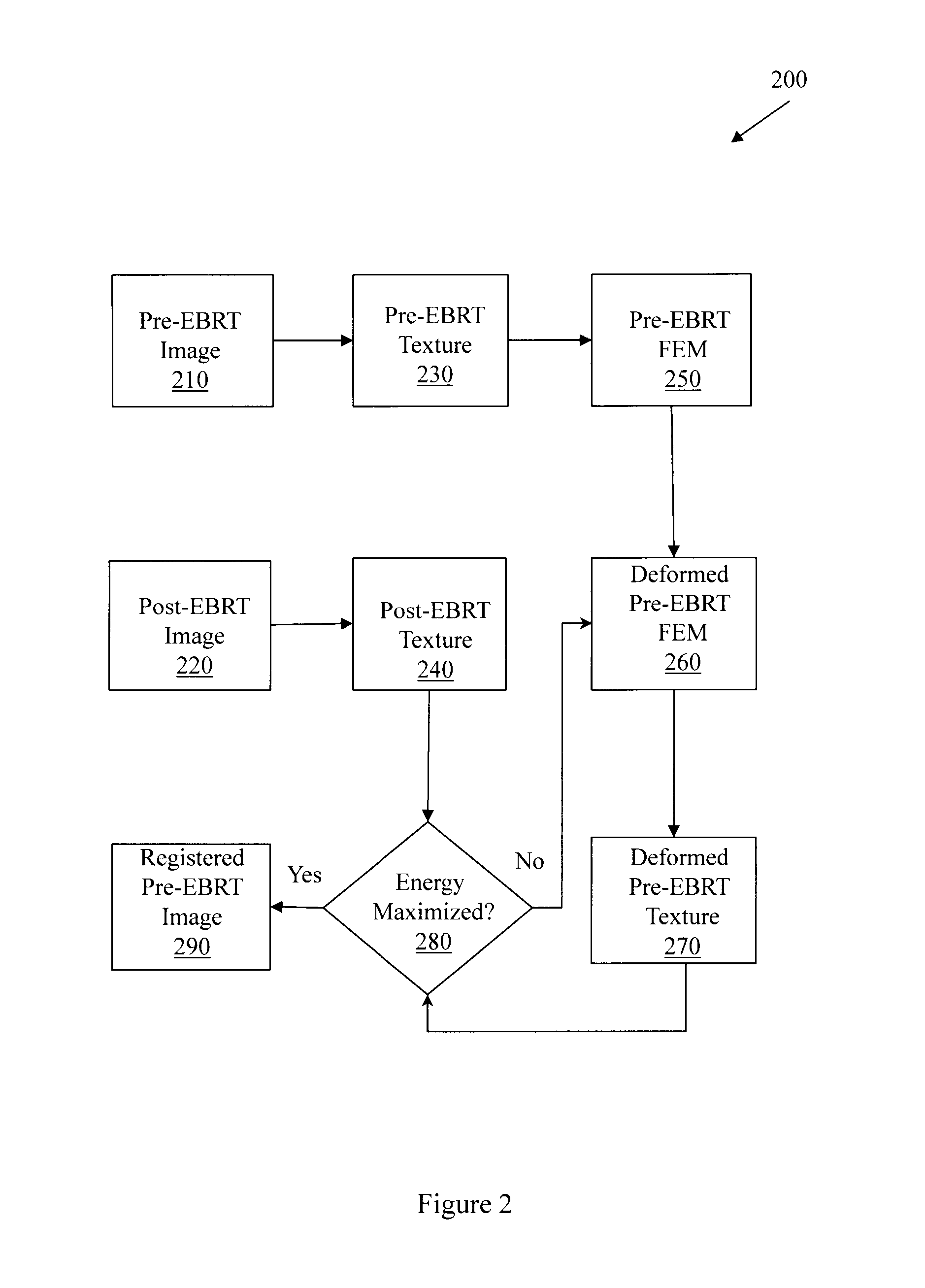Image Similarity-Based Finite Element Model Registration
- Summary
- Abstract
- Description
- Claims
- Application Information
AI Technical Summary
Problems solved by technology
Method used
Image
Examples
Embodiment Construction
[0013]Conventional systems for registering pre-EBRT and post-EBRT MR images using FEMs have relied on rigid initial registration and have involved aligning nodes of one surface onto corresponding nodes of another surface. Conventional systems have assumed that node correspondence can be accurately determined. Furthermore, in conventional systems the surfaces of the prostate must be aligned, with no consideration of the imaging information. Manual registration is time-consuming and unsuitable for large-scale studies, and may be prone to errors and inter-observer variability. Thus, conventional systems, both manual and FEM-based, result in inaccurate registration that limits usefulness in assessing the effectiveness of EBRT. Example systems, apparatus, and methods quantitatively evaluate image related changes in a post-EBRT organ, tissue, or region and evaluate more precise global and local deformations in the organ, tissue, or region due to effects of radiation.
[0014]Example systems,...
PUM
 Login to View More
Login to View More Abstract
Description
Claims
Application Information
 Login to View More
Login to View More - R&D
- Intellectual Property
- Life Sciences
- Materials
- Tech Scout
- Unparalleled Data Quality
- Higher Quality Content
- 60% Fewer Hallucinations
Browse by: Latest US Patents, China's latest patents, Technical Efficacy Thesaurus, Application Domain, Technology Topic, Popular Technical Reports.
© 2025 PatSnap. All rights reserved.Legal|Privacy policy|Modern Slavery Act Transparency Statement|Sitemap|About US| Contact US: help@patsnap.com



